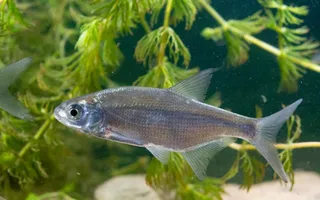Bream and our canals
Bream live in most of our canals and rivers. Although smaller bream are often prey for pike, they can sometimes grow to a large size that makes them attractive to some anglers.
How to identify a bream
The bream is a deep-bodied fish with a high back and flattened sides. Typically, they have dark brown or greyish on the back, with younger fish being much more silvery.








